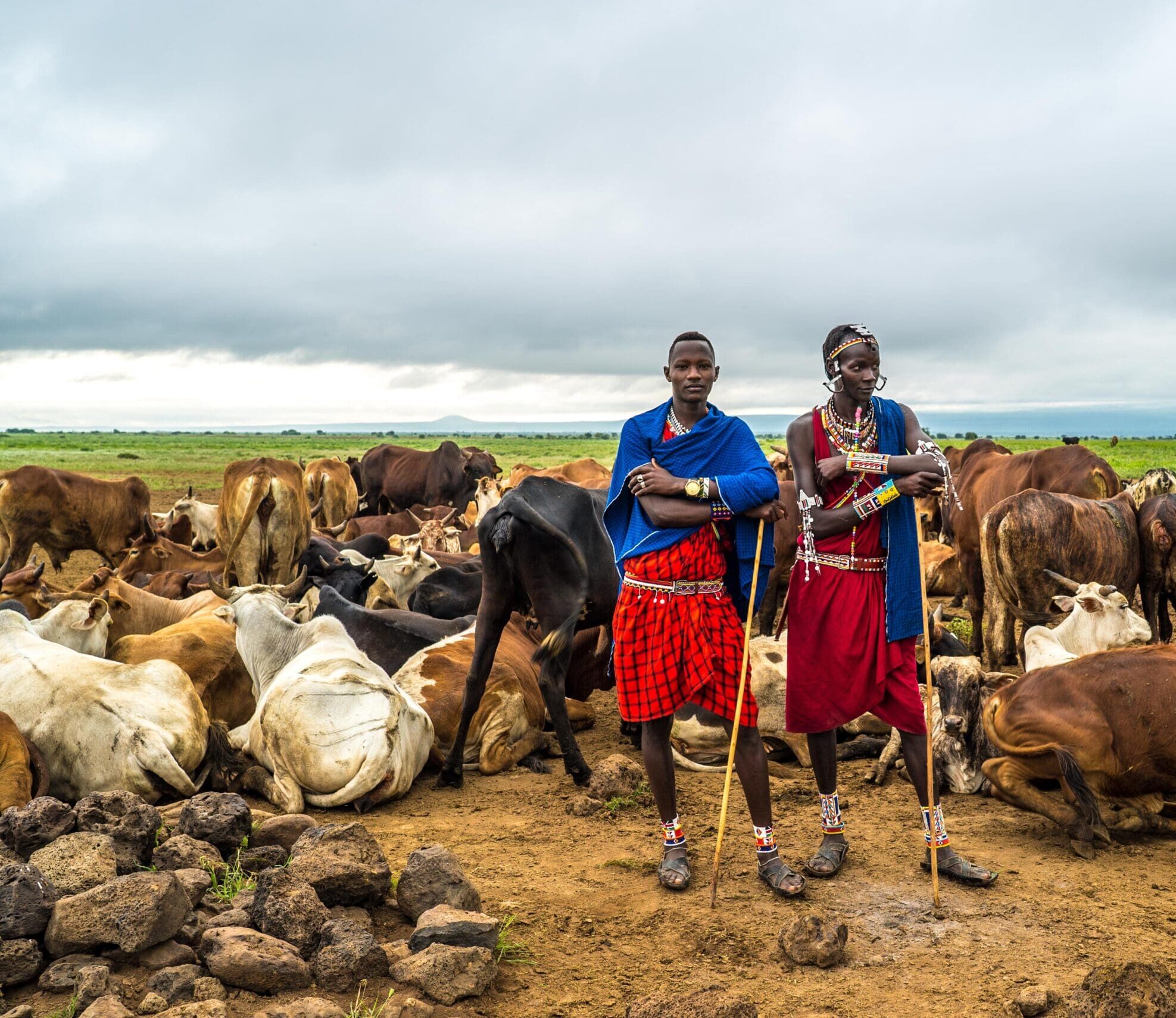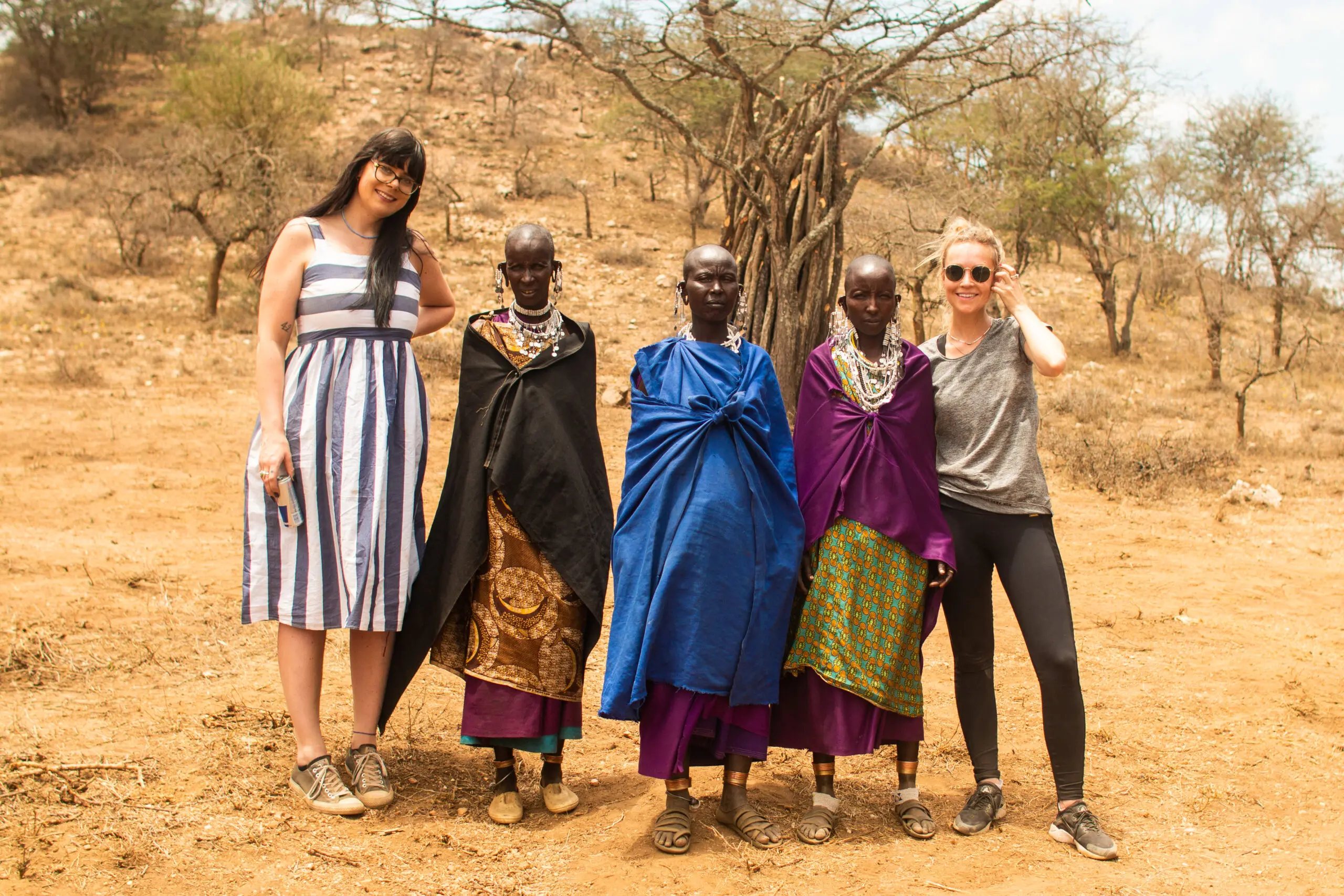Gorilla trekking: Bwindi Impenetrable Forest in Uganda
The mountains, covered in dense, dark forests, are home to almost half of the critically endangered mountain gorillas. Globally, there are only about 1,000 of these primates left, nearly half of which can be found in the Pearl of Africa.

Gorilla trekking
During a gorilla safari, also known as gorilla trekking, you get the chance to experience one of the most spectacular 'up-close' and personal wildlife encounters possible in a lifetime: meeting our distant relatives in the misty rainforests, their natural habitat.
A gorilla trek is a magical, unforgettable experience. From a lodge near the park, you'll rise early and venture into the misty forest. The hike takes you through dense jungle (think: machetes, vines, Tarzan, and Jane), led by a tough ranger who tracks down the mountain gorillas. Sometimes you’ll find them right away, other times, it may take up to five hours of hiking before you encounter them. And there you stand: face to face with these majestic apes. You get to admire them for an hour as they casually go about their business, just metres away. This tour might not be a budget option, but the experience is one you’ll never forget!
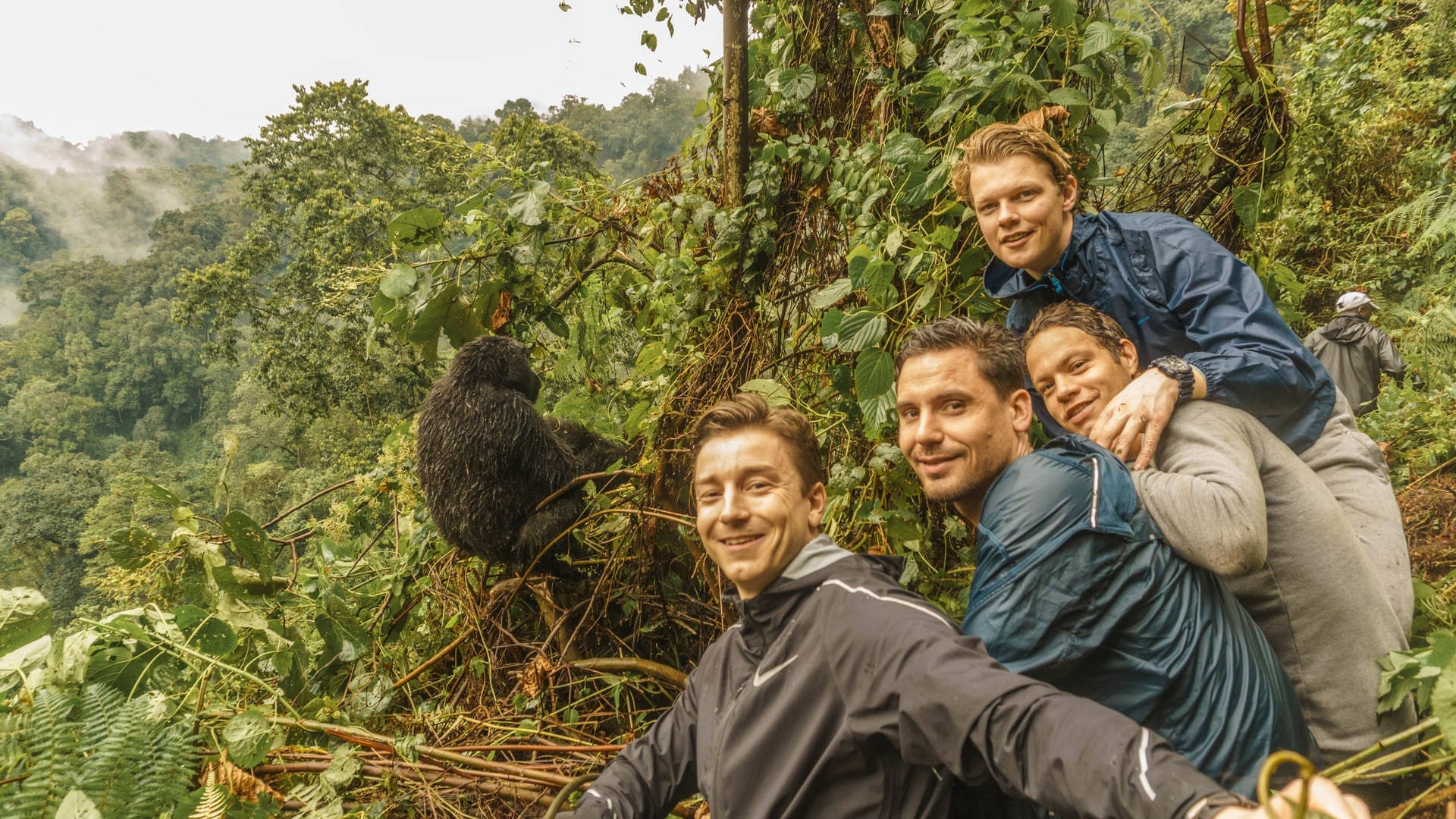


Bwindi Impenetrable Forest
This UNESCO World Heritage site in Uganda is one of the best places in the world to spot mountain gorillas, as the forest is home to nearly half of the critically endangered population. A thick, misty jungle like the one you know from The Jungle Book, so dense that it's almost impossible to make your way through. It's for this reason that Bwindi is called ‘Impenetrable’ Forest, and during a trek, you'll truly feel like you're in another world. The landscape is breathtaking: from misty valleys to steep hills, with the song of exotic birds echoing all around.
About Bwindi and the Mountain Gorillas
The rainforest lies mostly in Uganda, extending a bit over the border into Congo. It is located right next to the famous Virunga National Park in the Democratic Republic of Congo. The mountain gorillas are the most endangered primate species in the world: in the 1970s, their estimated number was only 600 (yes, in the whole world!). Thanks to their protected status, their population has since grown to about 800. Of these, approximately 400 live in Bwindi Impenetrable Forest, with the other 400 spread around the Virunga Volcanoes in Congo, Rwanda, and Mgahinga National Park in the southernmost part of Uganda.
Everything you need to know about gorilla trekking
Meeting the rare mountain gorillas in their natural habitat is an experience you'll never forget. However, before venturing into the dense forest, it’s helpful to be well-prepared. What makes these animals so special? And how can you make the most out of your trek? Here are the six key things you should know about gorillas and gorilla trekking:
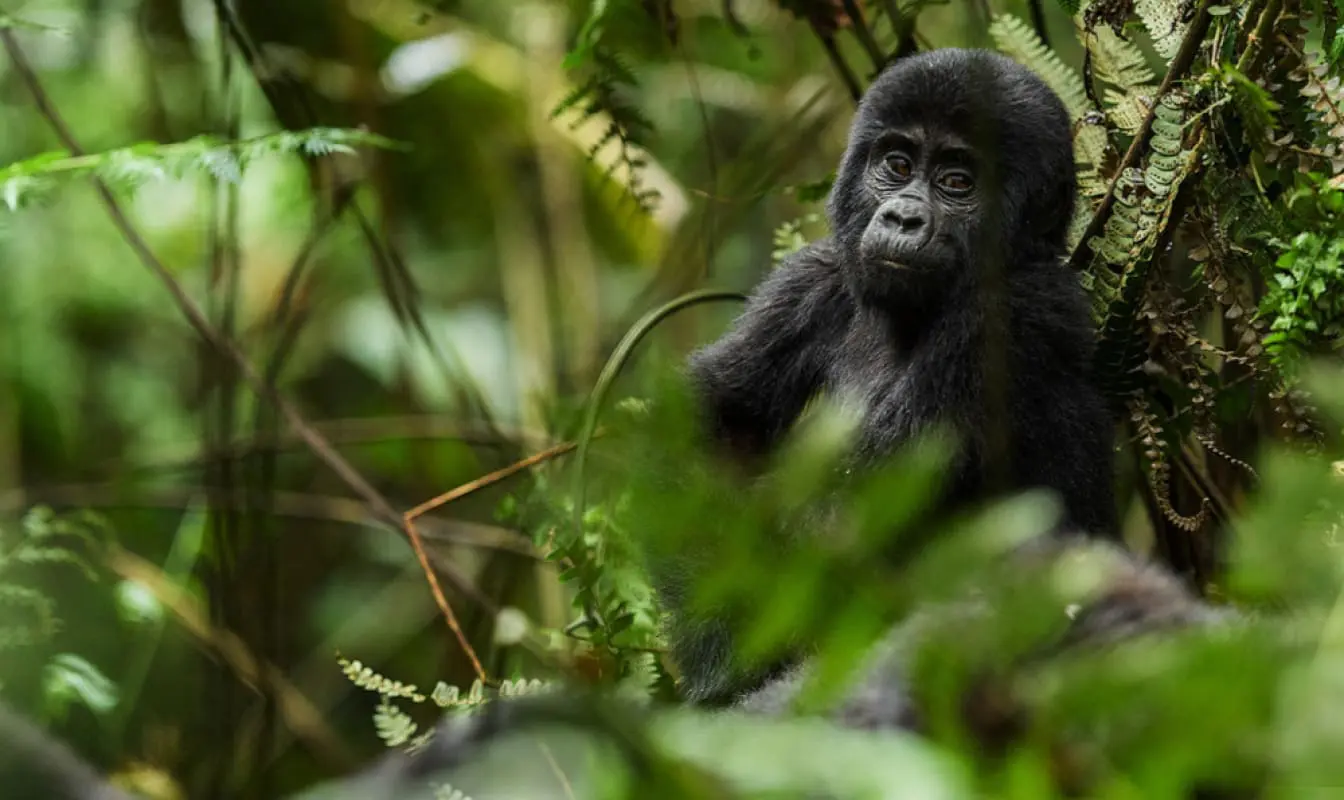
#1 About the gorilla’s
No creature on this planet has sparked more human fascination than our evolutionary ancestors, the gorillas. The name ‘gorilla’, derived from the Greek ‘gorillai’, literally refers to ‘a hairy person’—which, in many ways, they are. Their DNA is 98% identical to that of humans. In Africa, there are three species of gorillas:
- The western lowland gorilla, with an estimated population of 100,000.
- The eastern lowland gorilla, with a population of around 5,000.
- The mountain gorilla, of which only about 1,000 remain on this planet.
Uganda is one of the three strongholds of this last gorilla species, often referred to as the ‘gentle giant’. Male mountain gorillas, better known as ‘silverbacks’, stand around 160 cm tall when upright, weigh approximately 190 kg, and are six times stronger than an adult man. Females are generally smaller, standing about 130 cm tall and weighing around 95 kg. Like humans, mountain gorillas are highly social animals. They live in ‘troops’ that can consist of 12 to 40 members. These troops are centred around a dominant male ‘silverback’, who leads multiple females, subordinate males, and his own offspring. Eventually, younger males leave the group, either to form their own troop or to join another.
A stable gorilla family exudes a sense of harmony that we humans, in our fast-paced modern society, could certainly learn from. The ‘silverback’ plays tenderly with his young, the adult females teach their offspring the rules of the jungle, and the babies tumble about in playful mischief. But don’t be fooled by their peaceful existence and teddy bear-like appearance! Mountain gorillas possess formidable weapons, including highly developed canine teeth and powerful jaw muscles. These are not only useful for eating plants but also for defending their troop or seizing control of one. In such cases, lethal fights between males and even infanticide (where a new leader kills the offspring of the previous dominant male) are brutal yet common occurrences.
Humans, however, generally have nothing to fear. The troops visited by tourists are habituated to human presence and tolerate people in their vicinity. Male gorillas may make bluff charges to assert their dominance, but they will never attack without provocation. To date, there have been no reported incidents during a gorilla trek. Nonetheless, it is crucial to treat these giants with respect—they are by no means ‘tame’. A great example of this is seen in Disney’s Tarzan: when Jane encounters a gorilla in the jungle, she immediately kneels to show submission. The villainous colonel, on the other hand, raises his rifle, declaring war.
#2 National Gorilla Parks
Gorilla troops do not have fixed territories, although they can usually be found within a core area. Uganda is home to more than 50% of the entire mountain gorilla population, currently hosting around 18 groups. These can be spotted in Mgahinga Gorilla National Park and Bwindi Impenetrable National Park. Both parks are characterised by misty, dense montane rainforests where gorillas feast on a variety of plants. These gentle giants consume approximately 20 kg of food daily, including wild celery, lobelias, and thistles. Sometimes, they even treat themselves to a dessert of fruit, insects, or decaying wood—eating until their bellies are full! Interestingly, some of the plants on the gorillas' menu are edible for humans too, provided they are properly prepared.
Mgahinga Gorilla National Park
The first park, Mgahinga Gorilla National Park, is Uganda’s smallest national park, covering 33.9 km². Its name, given by the local Bafumbira community, derives from the word gahinga, meaning ‘piles of volcanic stones’—a fitting name, as the park is home to three of the Virunga volcanoes: Sabinyo, Gahinga, and Muhavura. As its name suggests, Mgahinga is a prime location for gorilla trekking. Visitors have the chance to encounter one of Uganda’s 17 gorilla troops, known as Nyakagezi, and, with a bit of luck, might also spot the golden monkeys. True to their name, golden monkeys are recognisable by their striking gold-orange colouring, which appears on their upper flanks and, like the male gorilla, on their back. Despite their smaller size, these creatures also struggle to survive. Encountering both the tiny golden monkeys and their large black-and-grey relatives—essentially a meeting of gold and silver—is a unique experience found only in Mgahinga Gorilla National Park.
Bwindi Impenetrable Forest
The second park, Bwindi Impenetrable Forest, spans an area of 321 km². The name Bwindi, meaning ‘impenetrable’, comes from its muddy, swampy rainforest, which is shielded by a thick canopy of foliage. Bwindi is undoubtedly one of the most exceptional protected areas in East Africa. It is renowned as one of Africa’s oldest habitats, dating back approximately 25,000 years, and is considered one of the continent’s richest regions in terms of biodiversity. The rainforest is characterised by river gorges and misty mountains, serving as a crucial haven for wildlife. It is home to over 1,000 species of flowering plants, 163 tree species, 360 bird species, 200 butterfly species, 120 mammal species, and 11 primate species, including wild chimpanzees and mountain gorillas, which appear to coexist harmoniously in Bwindi.
However, the mountain gorillas are undeniably the main attraction of Bwindi Impenetrable Forest. The park is home to a total of 17 gorilla troops, which account for nearly half of the global population. Ten of these troops have been habituated and can be visited by tourists in one of the park’s four gorilla trekking sectors:
- Buhoma (northern Bwindi NP, lower altitude, three habituated gorilla families)
- Ruhija (eastern Bwindi NP, moderate hills, 1,000m higher than Buhoma, three habituated gorilla families)
- Rushaga (southern Bwindi NP, highly hilly terrain, two habituated gorilla families)
- Nkuringo (southern Bwindi NP, extremely mountainous landscape, one habituated gorilla family)
Recently, the Rushaga sector introduced a unique experience: gorilla habituation. This gives visitors the rare opportunity to spend four hours with the mountain gorillas, observing how scientists and rangers gradually familiarise a gorilla group with human presence. This is an incredibly intensive process, typically taking about three years to complete. Due to negative past experiences with humans—including habitat destruction, illegal trade in baby gorillas, and poaching—these primates are critically endangered, and their instinctive reaction to people is usually to flee.
Both Mgahinga National Park and Bwindi National Park have been designated UNESCO Natural World Heritage Sites. They play a crucial role in protecting the rainforest and its immense biodiversity, preserving the natural habitat of the endangered mountain gorillas. Beyond conservation, they offer visitors an extraordinary mix of nature, wildlife, and cultural encounters with the indigenous forest communities. However, if your goal is to go gorilla trekking, Bwindi Impenetrable Forest remains the top destination.
#3 Best time for a gorilla trekking
Uganda lies directly on the equator and, as a result, has a tropical climate. Temperatures remain fairly consistent throughout the year, ranging from around 11°C in the morning to 23°C in the evening. This means that gorilla trekking can be done year-round. However, the best time for this adventurous expedition is from June to September, as well as in December. These months mark the dry season, when the parks are drier and more accessible. If you plan to go gorilla trekking during this period, be sure to book your permit well in advance, as they are limited and highly sought-after in the dry season—also known as the high season.
October and November are characterised by a short rainy season. While not ideal, gorilla trekking is still possible during this time. The long rainy season falls in March and April, bringing heavy downpours that make the slopes slippery and trekking more challenging. However, the rainy season has its own advantages: it is the low season (meaning fewer tourists), the landscapes are lusher, and there is less dust in the air.
Tip: When planning a gorilla trek, use the seasons as a guideline, but don’t rely on them too strictly! The weather can be unpredictable, and with climate change affecting weather patterns, occasional rain showers can happen at any time.


#4 How difficult is the trek?
A gorilla trek is done in groups of up to eight people (with a maximum of 80 visitors per day) under the guidance of experienced rangers who know the jungle inside out. Together, you venture into the magical rainforest in search of one of the majestic mountain gorilla troops.
Anyone over the age of 15 and in good physical condition can join a gorilla trek. Those who struggle along the way can count on the help of knowledgeable and strong rangers. The difficulty of the trek depends on several factors, including weather conditions, the location of the gorillas, and your personal fitness level.
- Rain can make slopes slippery and trails muddy, making the climb more challenging.
- Gorilla locations vary—sometimes they are in lower-altitude areas with moderate inclines, but they can also be high up in the mountains with extremely steep terrain.
- Altitude plays a role—the higher you go, the steeper the ascent and the less oxygen there is in the air, making every extra kilo feel heavier. Luckily, you can hire a porter to carry your backpack and assist you along the way. These porters are skilled in navigating the jungle and earn a fair wage for their help.
Whether you embark on a relatively easy trek or a more demanding one, your jungle adventure will be an unforgettable experience. Expect to climb slopes, cut through dense vegetation (off the beaten track!), and be surprised by wildlife both big and small. The duration of the trek is highly variable: rangers have a good idea of where a gorilla family was last seen, but they cannot control their movements, and these giants do not sit still. On average, gorillas move about one to two kilometres per day, but in cases of disturbance or drought, this can increase significantly.
On the day of your safari, you will have an early start. A gorilla family might be just half an hour from the starting point, but they could also be six hours away. However, I can promise you that the distance covered and the effort required fade into insignificance the moment the gorillas appear before you. Surrounded by these ‘kings and queens of the jungle’, time seems to stand still as you are overwhelmed by their mix of power and tranquillity. Females caring for their young, the dominant silverback keeping a watchful eye and thumping his chest, curious juveniles breaking the mandatory seven-metre distance to come and investigate you… Before you know it, your hour is up, and the ranger receives a signal from the gorilla leader—it’s time to head back home.
#5 Gorilla Trekking Uganda vs. Rwanda/Congo
Gorilla trekking is not only possible in Uganda but also in Rwanda and the Democratic Republic of Congo.
In Rwanda, mountain gorillas can be found in Volcanoes National Park, named after the chain of dormant volcanoes that shape the landscape of the Virunga Massif. The mountain rainforests in Uganda and Rwanda are quite similar. However, compared to Rwanda, Uganda offers several advantages:
- More wildlife and biodiversity
- A larger number of habituated gorilla families (18 in Uganda vs. 12 in Rwanda)
- Significantly cheaper gorilla permits ($700 in Uganda vs. $1,500 per person in Rwanda)
- Exclusive ‘gorilla habituation experiences’ only available in Uganda
Gorilla trekking is also possible in DR Congo, but it is generally discouraged due to the country’s ongoing instability.

#6 Prices: why is gorilla trekking so expensive?
Although the mountain gorilla population is increasing by 3% per year, these gentle giants are still victims of poaching, habitat loss, and infant abductions. As a result, they remain classified as "Critically Endangered" (IUCN) and require ongoing protection. Conservation efforts include 24/7 monitoring and gorilla trekking, meaning that your trek is not just an incredible experience—it also directly contributes to the survival of these magnificent creatures. This is why gorilla trekking is not a "budget deal" but rather an investment in wildlife conservation.
The Cost Breakdown of a Gorilla Permit
In Uganda, a gorilla permit costs at least $700 (€600), although discounts may be available during the low season. The fee is allocated as follows:
- 75% – Conservation of mountain gorillas (including ranger salaries, anti-poaching patrols, and habitat protection)
- 15% – Government funding for park maintenance and wildlife initiatives
- 10% – Support for local communities (providing jobs, education, and infrastructure to reduce human-wildlife conflict)
Your permit includes:
✔️ National park entrance fee
✔️ One hour of gorilla observation
✔️ Expert trackers and rangers to ensure a safe and informative experience
A personal porter (backpack carrier) is not included, but you can easily hire one for $15—a small amount that directly benefits the local economy.
The Impact of Your Trek
Thanks to these conservation efforts, the mountain gorilla population has grown from just 240 to over 1,000 individuals. Every visitor contributes to this success, ensuring that future generations can still witness these extraordinary animals in the wild.
By joining a gorilla trek, you’re not just embarking on a life-changing adventure—you’re actively helping to protect a species on the brink of extinction.
Why you must do a gorilla trekking
A gorilla trek is not just a travel activity; it is an opportunity to contribute to conservation, to connect with the Earth, and to experience a story that will stay with you for a lifetime. It is an adventure that pushes boundaries, both physically and emotionally, and one that will give you deep respect for the beauty and vulnerability of our planet.
Discover more of Uganda
Or go through all our unique and authentic experiences
Lake Bunyonyi and Lake Matunda
One with 29 islands scattered across the water's surface, the other reflects the volcanoes of Congo.
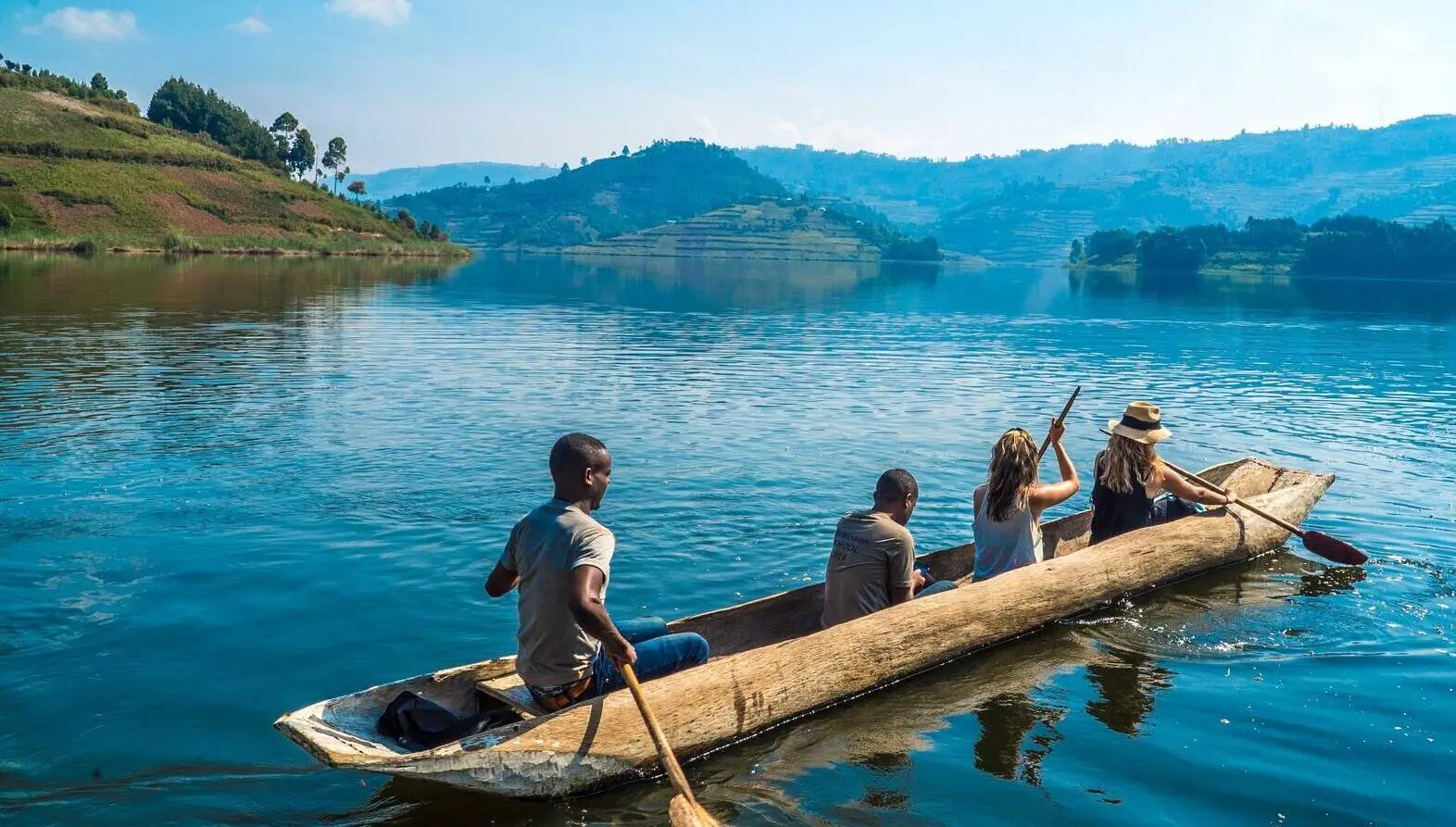
Karamoja and Kidepo Valley
A region where the roads are dusty, the nature is untouched and the culture is raw and authentic.
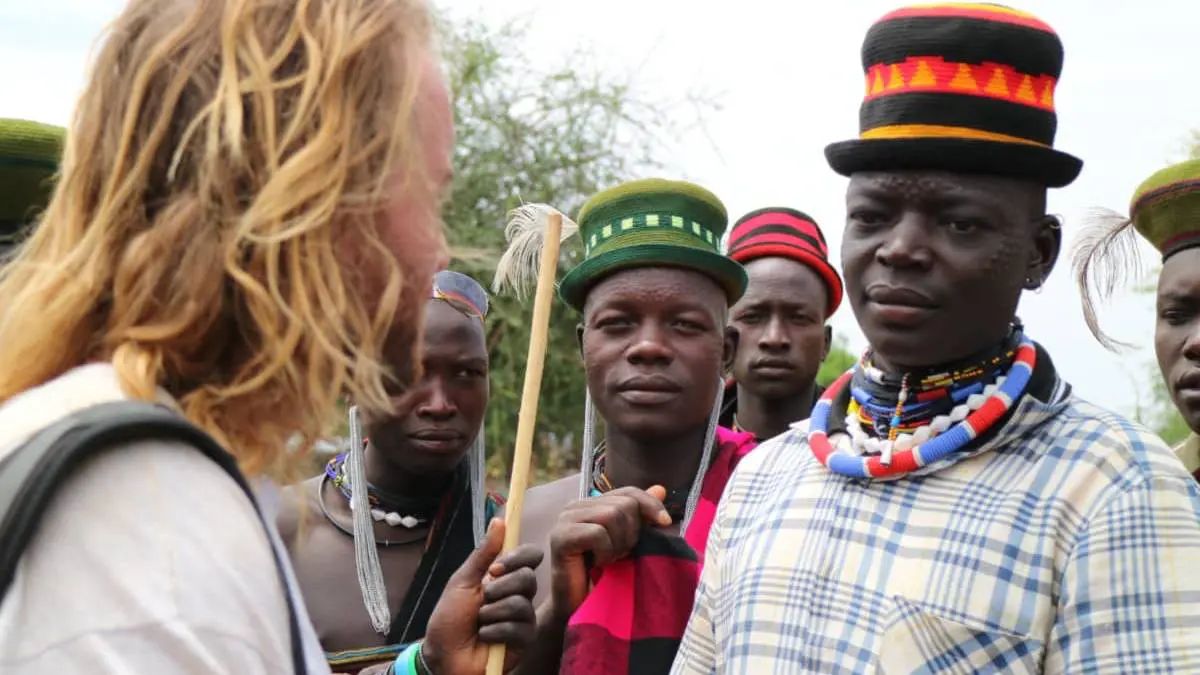
The full Uganda experience
Search for lions in the treetops and experience authentic encounters with the locals.
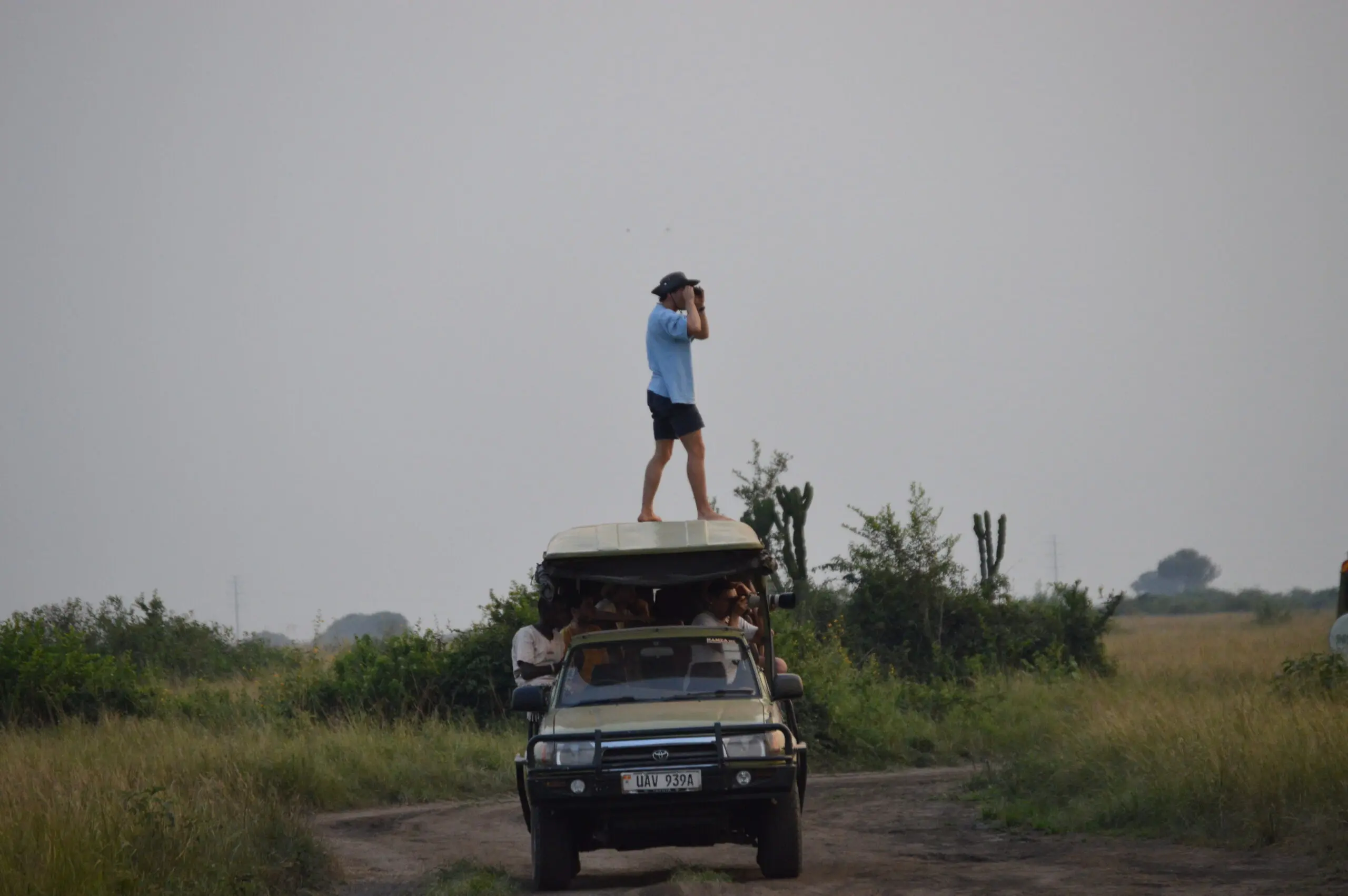

Need travel advice? Ask our Africa experts
Hungry for the unknown? Our Africa experts have answers to your pressing questions.
